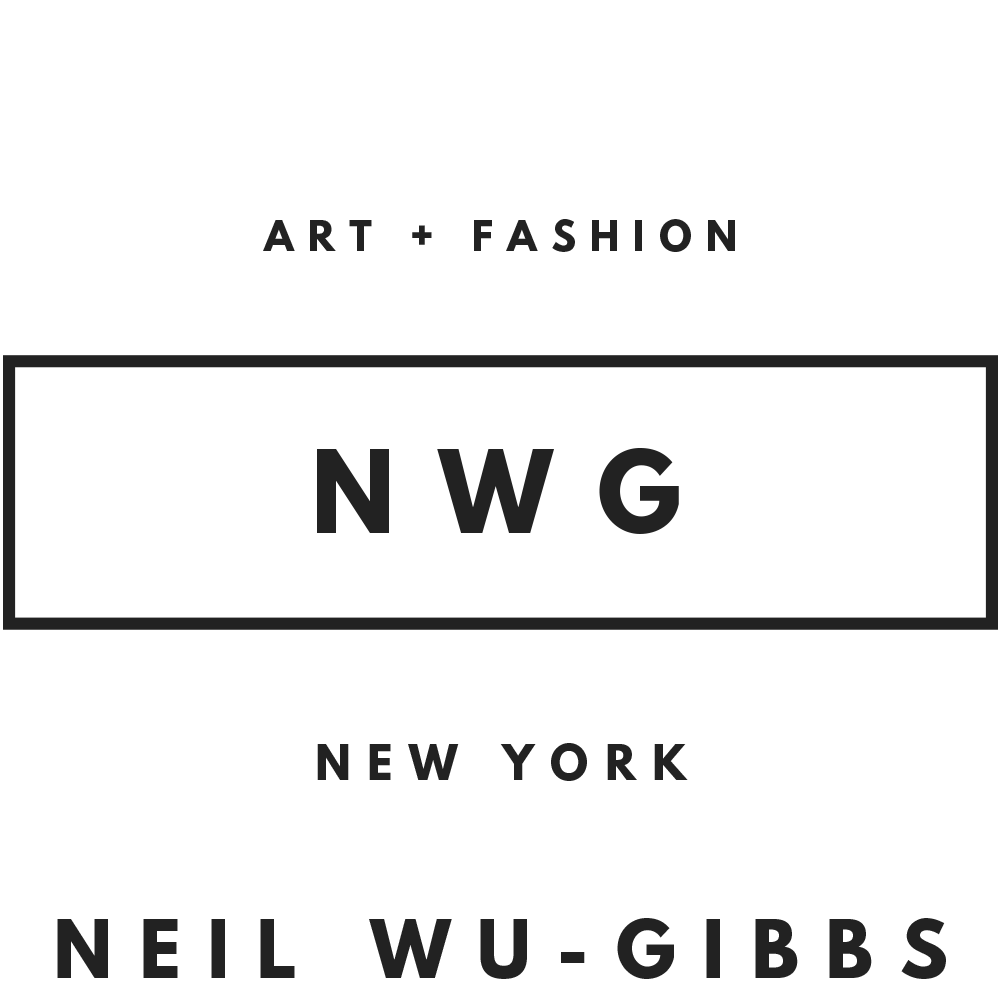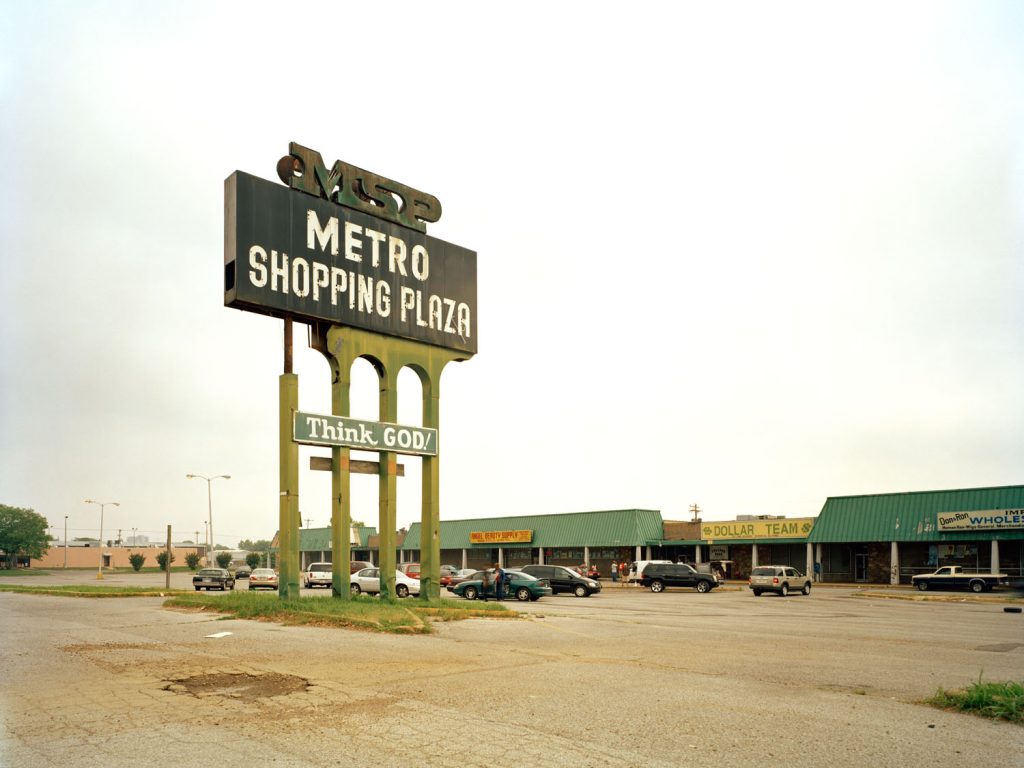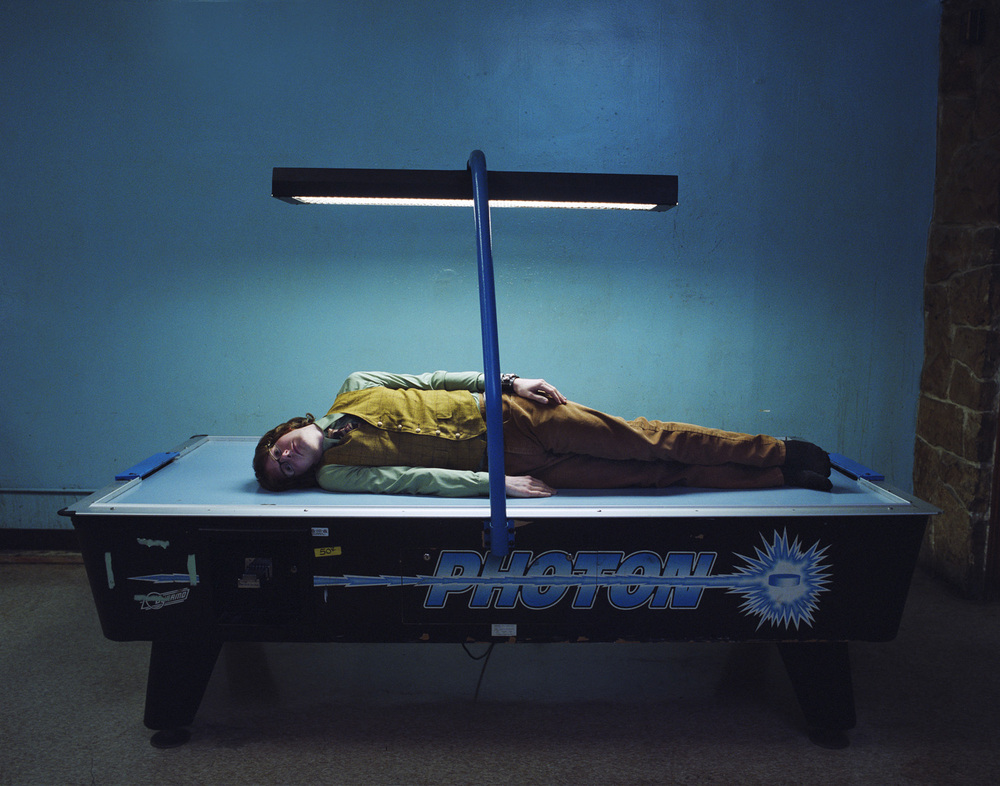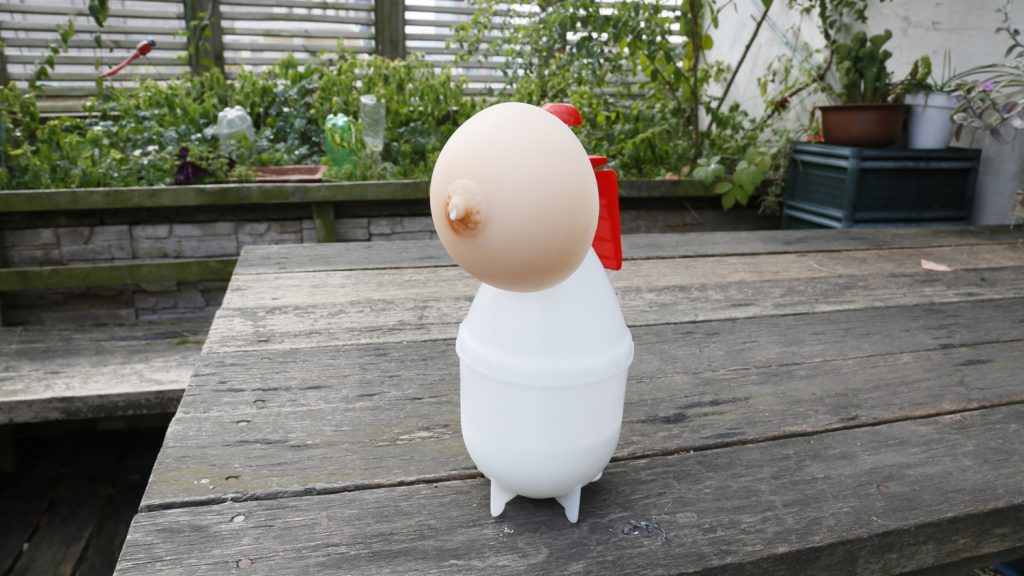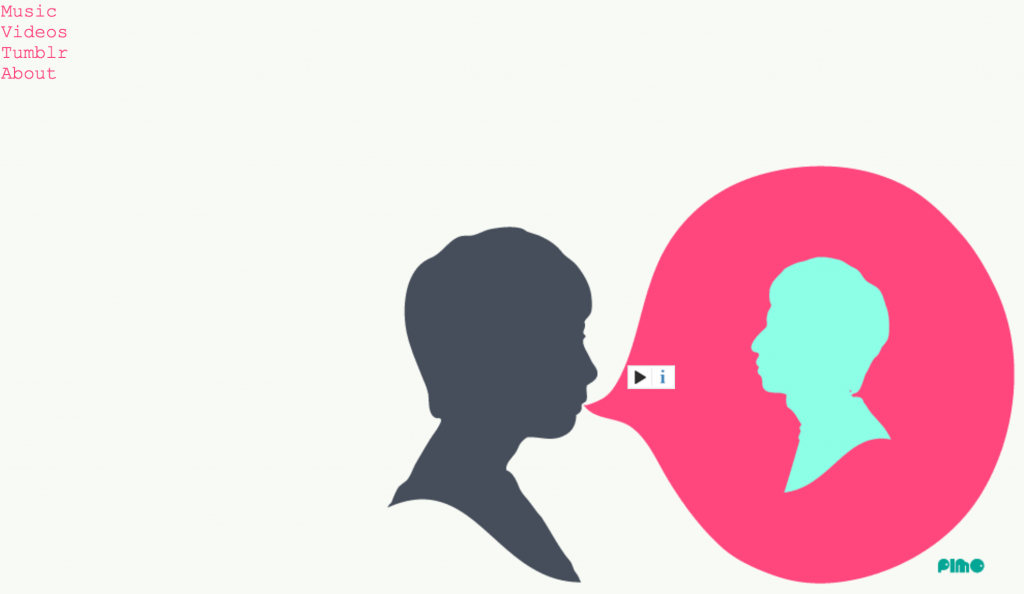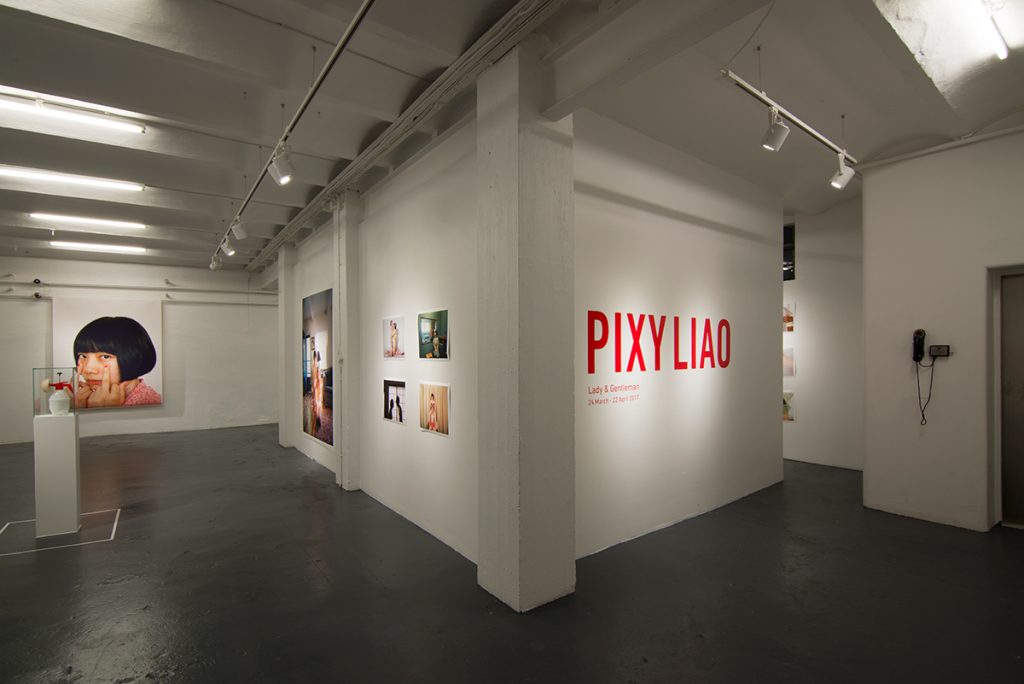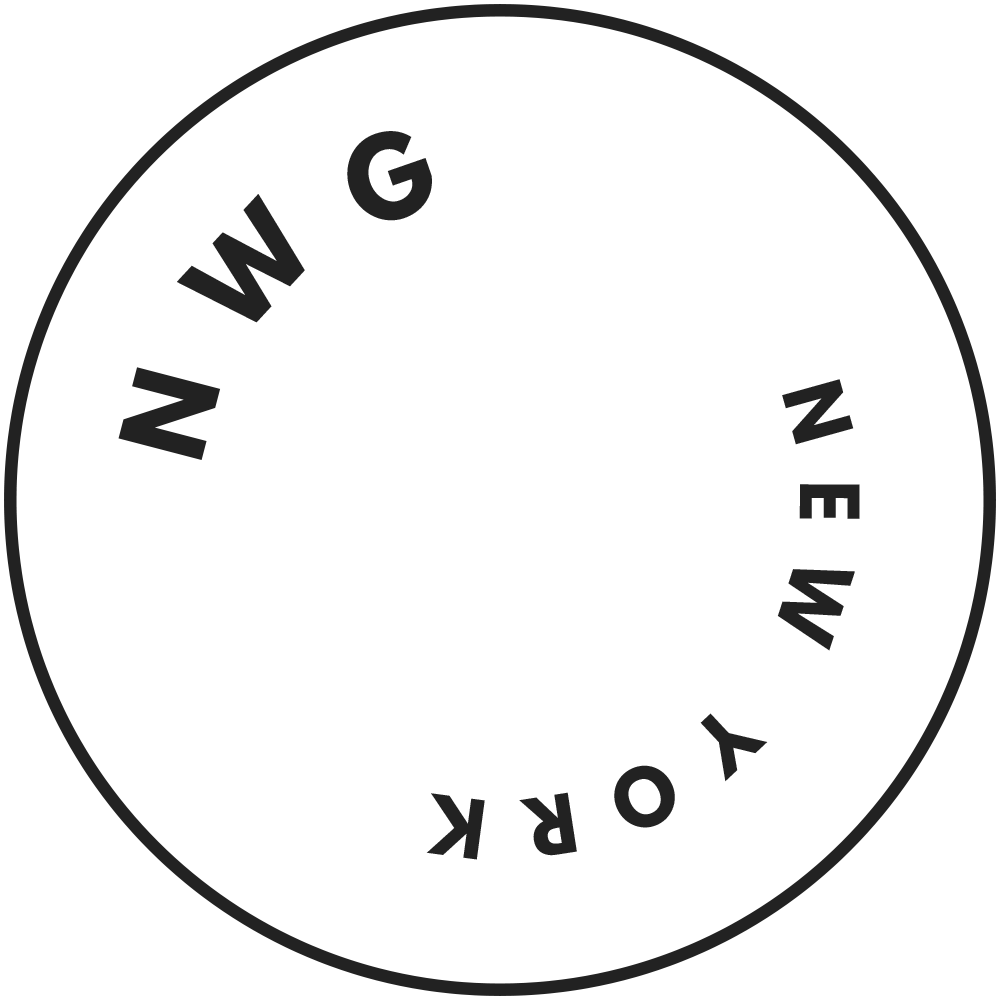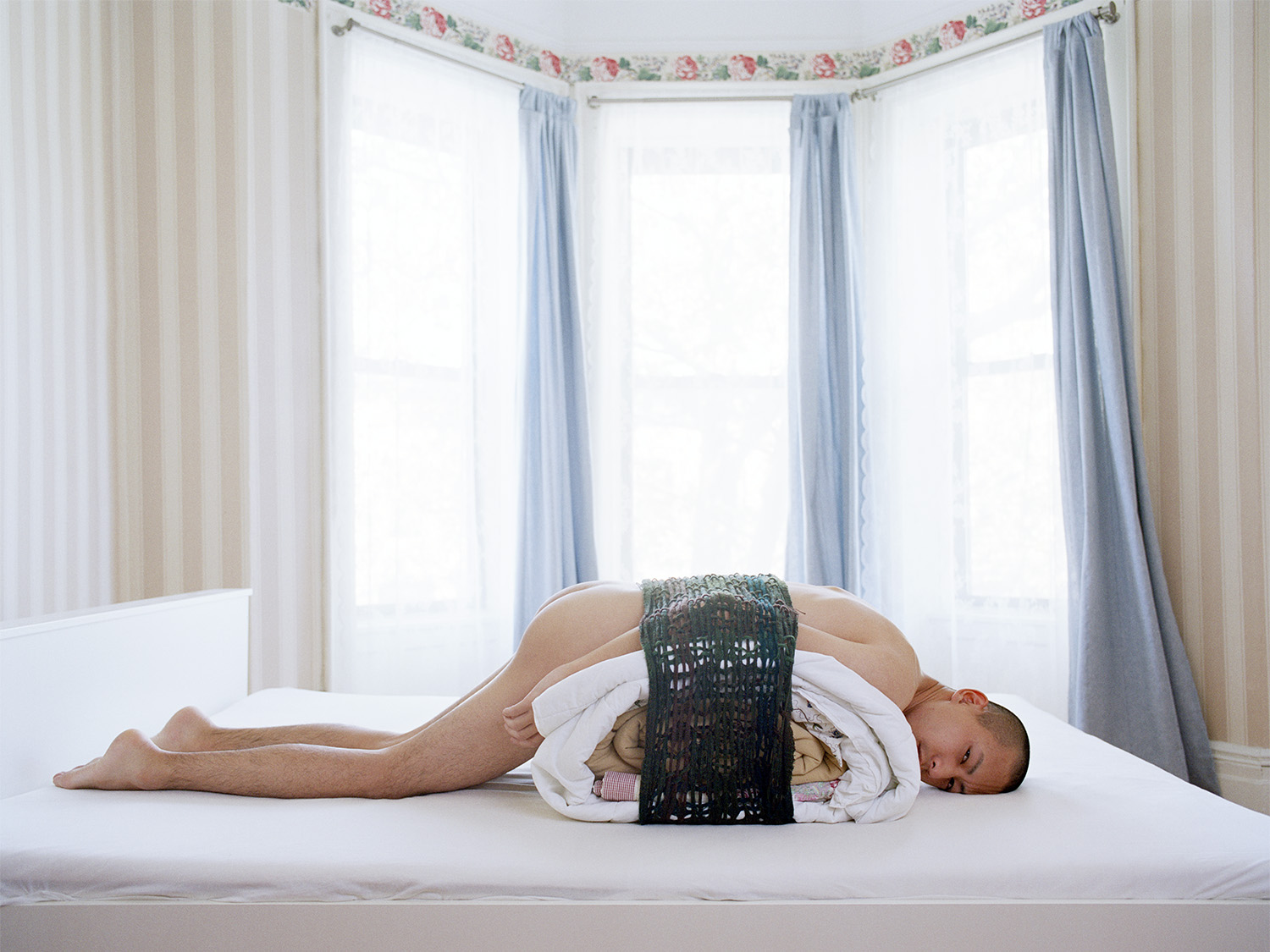
Image: Home-made sushi, 2011, C-Print, from the Experimental Relationship series, 2007-now
Thursday, January 12, 2017
Pixy Yijun Liao’s (pixyliao.com) body of artistic work straddles the line between the personal and the public arenas and sparkles with witticisms and humor. As well as producing a broad range of sculptures and performance videos, Liao uses her photographic skills to call into question the common perception of a number of modern concepts , such as the nature of “ the couple”, “the artist” and the” female experience”. Liao draws inspiration from experiences taken from her own life to present meticulously arranged works, which feature herself and people from her inner circle – for example, her partner, who is part of the long-term project Experimental Relationship (2007- Now) – to produce her signature images. These are often full of fun and frivolity, but can also verge on the dark. Liao has been inspired in her work by the New American Color Photography of the twentieth century, and her curiosity drives her to re-examine hierarchy and gender identity within relationships, and the multicultural societies and communities which are part of her own life.
Born in Shanghai and now based in Brooklyn, Liao is a visual artist who has harnessed her visual artistry to investigate gender dynamics and how they impact heterosexual relationships. In 2005, she moved to the US in order to study photography, and met Moro Magario, her boyfriend and the central figure in much of her subsequent work. Intriguingly, Liao has plumped in favor of dressing down, rather than dressing up, in her work. Moro is frequently naked or dressed in simple clothes to underscore his vulnerability. When we look at Experimental Relationship (2007- Now) series, we can see how Pixy conveys lack of power and the ebbing away of dominance by exploring body language. In Family Sushi (2011), Moro is nude and inert, passively sandwiched between folded bed sheets, and held in this position by cloth which resembles seaweed. Moro is thus quite helpless, extended across the frame: the raw fish, about to be devoured by the photographer on the other side of the camera.
Liao’s work also explores her own background, evaluating Asian social assumptions about gender roles in relationships, and taking issue with traditional beliefs. In Soft Heeled Shoes (2013), Pixy used a 3-D printer to create two silicon penises modelled from her boyfriend’s genitals. They were attached to a pair of yellow suede shoes, and acted as heels. This was a striking image, and a visual statement about their relationship.
In China, where Liao grew up, the vocabulary and images of Western feminism have no place in a society which continues to be influenced by Confucian thinking, and where traditional patterns of behavior dictate the role of women. Essentially, Liao is confronting traditional expectations head on, as a Chinese woman having a relationship with a Japanese man who is five years younger than her. Liao’s sensitive and imaginative Experimental Relationship series flies in the face of Chinese views on how relationship dynamics impact on couples. By showing a woman who is both forceful and powerful, Pixy is challenging her own Chinese culture and roots, and the worldview she was taught in Shanghai.
PIMO (Pixy & Moro) is a Brooklyn-based artist duo by Pixy Liao & Moro Magario
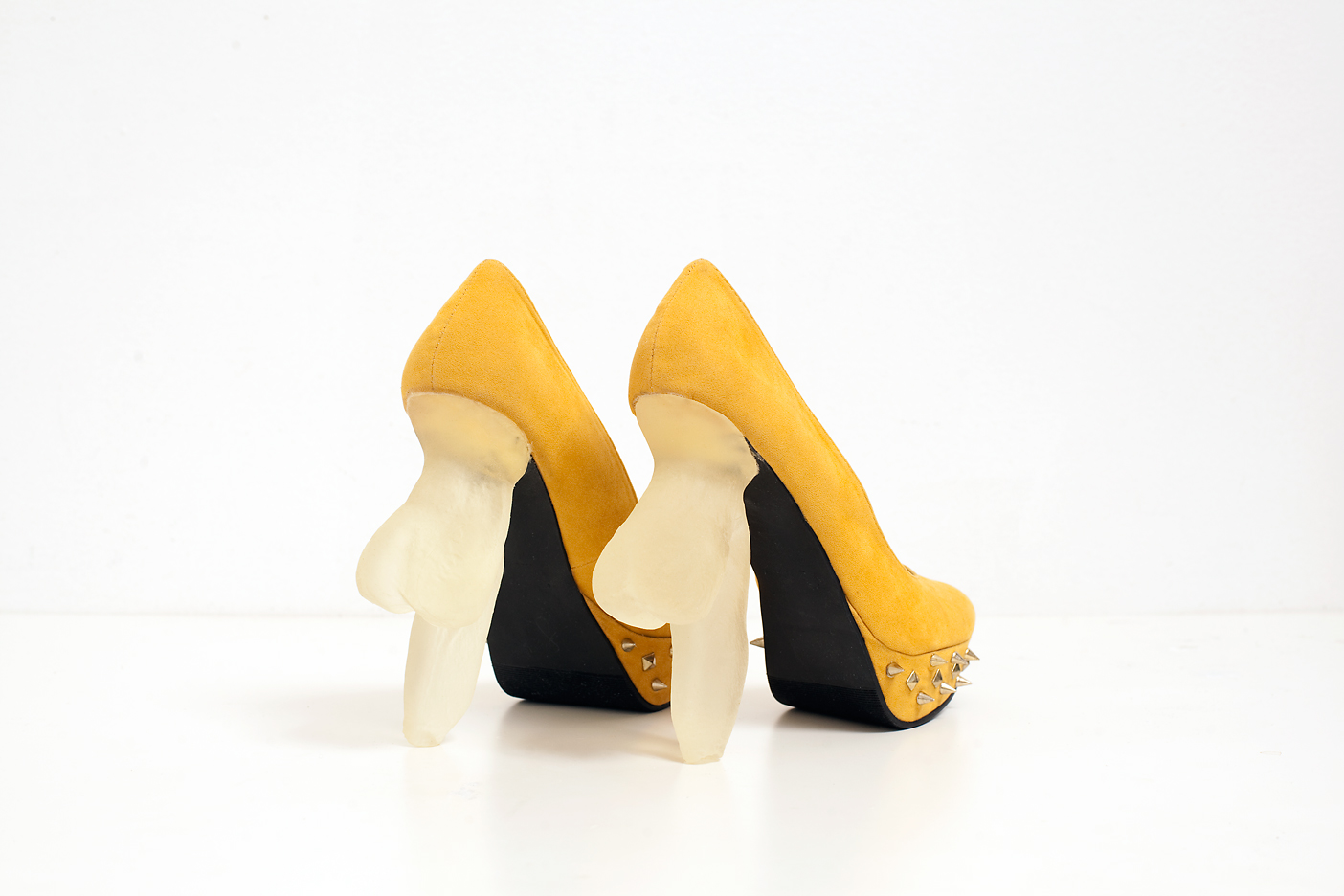
Image: Soft Heeled Shoes, 2013, 3D printed soft heels, suede shoes, metal, 7 x 3 x 7 inches
Neil Wu-Gibbs (NW): In the BRIC Contemporary Artist Registry, you’ve claimed yourself as a multidisciplinary artist. Could you please tell me more about this fascinating identity in relation to your artistic practices?
Pixy Liao (PL): I mainly do photography, but in recent years I’ve started to do sculpture, performance video, and book art. I don’t really consider myself a photographer. And I don’t really think about the form of medium in art that much. Photography is like using reality as my art material, and to create something with photography or any other medium … it is all the same to me.
NW: After we saw the BRIC Biennial: Volume II, Bed Stuy/Crown Heights, what do you think of this exhibition? Are there any featured artists and works that you like?
PL: I like Aisha Tandiwe Bell’s tricked out trap (2016). It’s very attractive. I think how he cleverly chose the material, the pattern, the color, and the message he wanted to send out really got to me. I’m not living in that environment but it is very close to what I’m thinking right now and what’s happening in the world.
Zachary Fabri’s Forget me not, as my tether is clipped (2012) was so playful. I enjoyed seeing how he in the video tried very hard to tie those balloons with his hair. Physically getting his work done is something inspiring to me.
NW: What about Rachel Frank’s American Bison (2014) in the Project Room?
PL: I love those animal masks. You can look into [the masks] in person and think about those animals and their relationships to our human being. Maybe I don’t even have a chance to get so close to an animal. Even though this is an artwork, it brings me to a distance that I would never have a chance to do that. Also thinking about if this kind of cute animal will still survive in this world is important to us.
NW: That’s a good point! Many of your photographs and projects have been exhibited internationally. How often do you travel? Do you spend some time in China every year? I’ve realized your work Men as Bags (2016) was featured in the booth of Leo Xu Projects at ART021 Shanghai Contemporary Art Fair.
PL: My family is still in Shanghai, so I try to go back at least once a year. I recently did a collaboration with Leo Xu Projects, and had a solo exhibition Venus As A Boy in his gallery.
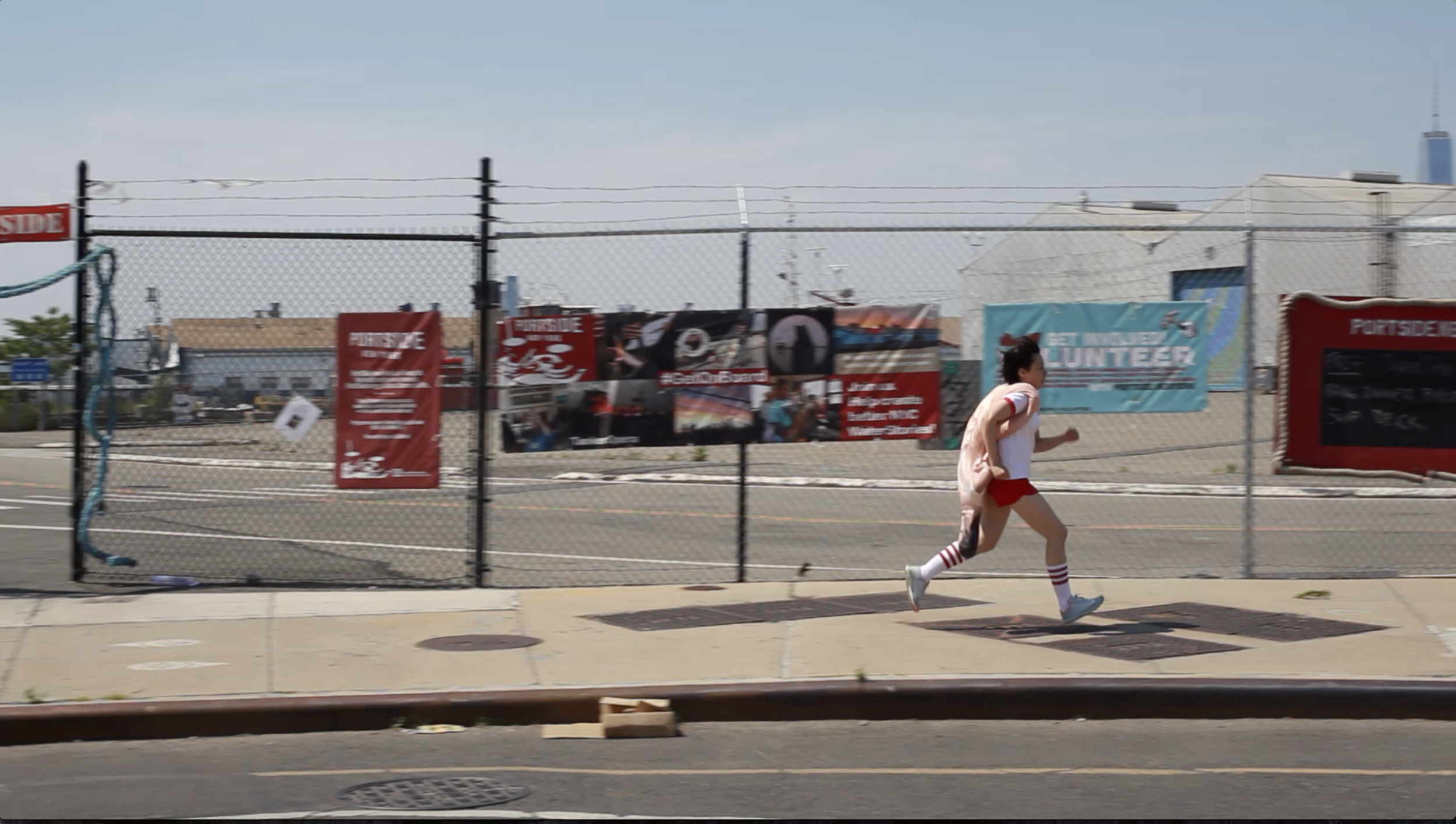
Image: Walking with My Man, 2016, Single channel video with sound, 3 minutes
NW: How was the experience? What did you feel about working with a Chinese gallery? Was it different from working with galleries in the West?
PL: I think it’s different on many levels. First of all, I didn’t learn art when I was in China. I didn’t grow up from their art education system, and I was educated in the U.S. about art. So I feel like I’m very disconnected with the Chinese art world. What people are thinking in China and the U.S. is different. In the art world, what’s in people’s mind and what people are talking about are completely different topics.
NW: Do you think China tends to be more commercial driven?
PL: Yeah! That’s the idea I get. In China, the art world is completely commercialized, because there are very few non-profit institutions, and that’s part of the reason I still stay in the U.S. I feel like I get more support from non-profit organizations here or in other countries than I can get in China.
NW: I agree. Because you need what we call “Guangxi” (connections) to get in certain places.
PL: In China it’s all about who you know. I didn’t graduate from those art schools so I don’t have the connections that come with it. Almost all of the big artists and curators are from that system, so you’re outside of their circles. That being said, I was very lucky to work with Leo Xu. But it was also a coincidence that I happened to know him before I became artist. We got to know each other long time ago when we were both just happened to be in the same college which was not an art school. We played together and kept in touch. Later on we realized that we were the only two people out of the school that actually doing art.
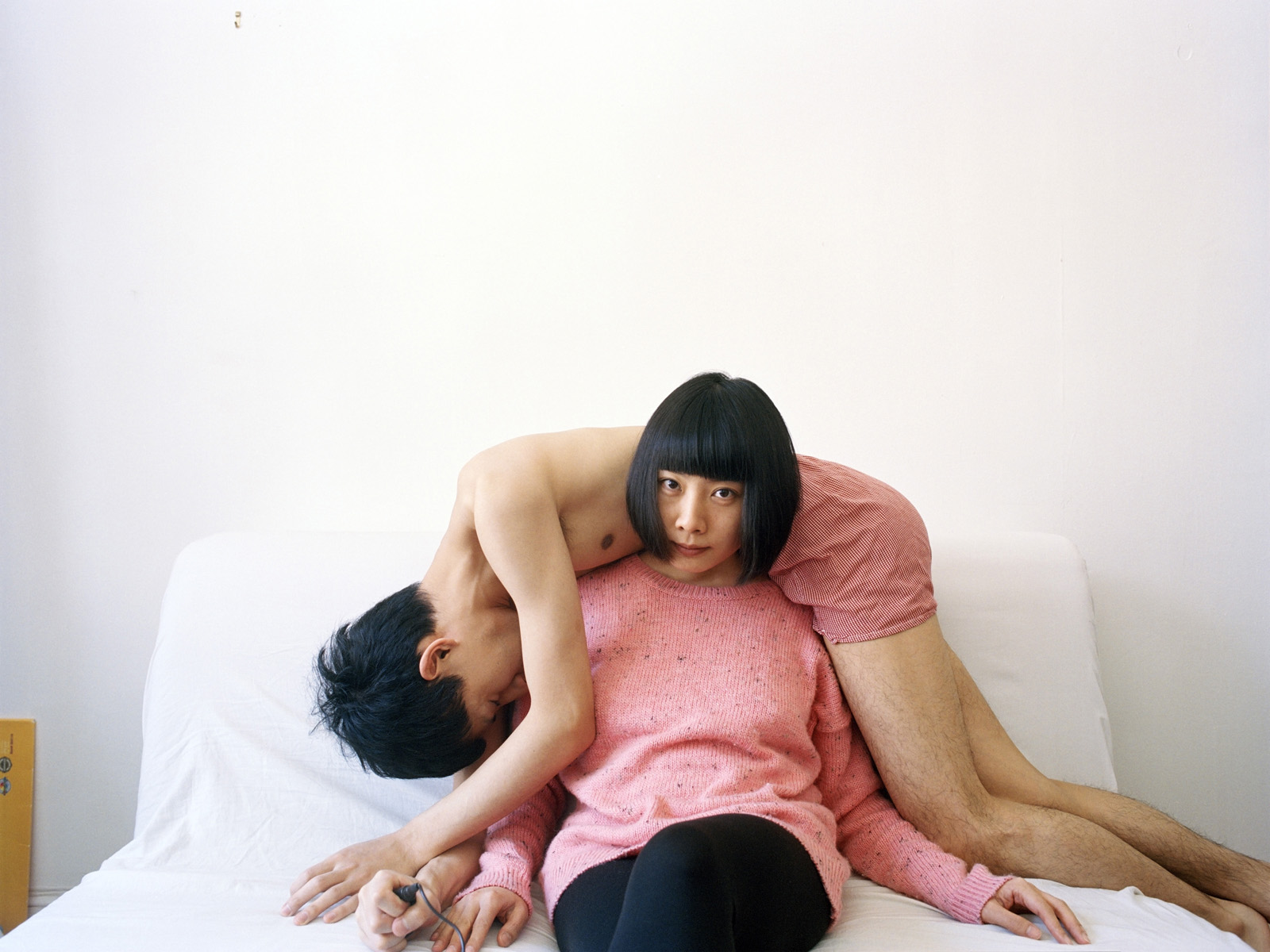
Image: It’s Never Been Easy to Carry You, C-Print, from the Experimental Relationship series, 2007-now
NW: What did you study in your undergraduate in China?
PL: I went to The Shanghai International Studies University (SISU). My major was Communication Education Technology, which I had no idea what it was about. Basically, I studied English and theories about education … But I had no interest.
NW: That’s very interesting. To me, Chinese contemporary art and Western contemporary are two separate worlds.
PL: It’s getting much better I would say these years. Maybe three or four years ago when I went back to Shanghai I was trying to see some art. It was just very disappointing because it was not up to date. But these days many new museums and galleries are opening up in Shanghai so I see a lot more exciting art.
NW: Is it because of the international art fairs?
PL: Yes! The West Bund Art & Design, Art021, and PHOTOFAIRS are three major art fairs.
NW: It not only provides a great platform for global artists like you, but also for domestic audiences, collectors, dealers, and even Chinese artists to learn about Western art.
Image: Think God!, C-Print, from the Memphis, Tennessee series, 2006-2008
NW: In 2005, your first adventure outside of China took you to Memphis, Tennessee, where you obtained an MFA in Photography. And now, you reside in Brooklyn. What I would like to ask is how these two cities have influenced your work.
PL: I went to Memphis was really a coincidence. It was after 9/11 and I just had ideas that New York was going to get attacked again. So I decided to go somewhere in the middle of the United States. I didn’t know much about Memphis at that time. I only know about Elvis Presley. I thought the town could be interesting since there are musicians.
To me, it was a culture shock at first. The first day I got there my professor just drove me around the city, and I was thinking “Oh my God, the city looks like a park itself! There’re so many trees!” The environment was different, and I really loved the landscape in Memphis. It’s like, old, run-down landscape, but you can still see the vibrant history since the 1950s or earlier. The American architecture and colors were very different for me, but at the same time I felt it was good for photography. It inspired me to go out and shoot landscapes.
I graduated and I moved to New York since 2009. The main reason was I don’t like driving. New York city is a much more convenient place. It’s similar to my hometown [Shanghai]. In terms of my artistic practices, when I was in Memphis there were many great locations, so I could go out and photograph. But in New York I don’t feel like I have the freedom to go out and photograph.
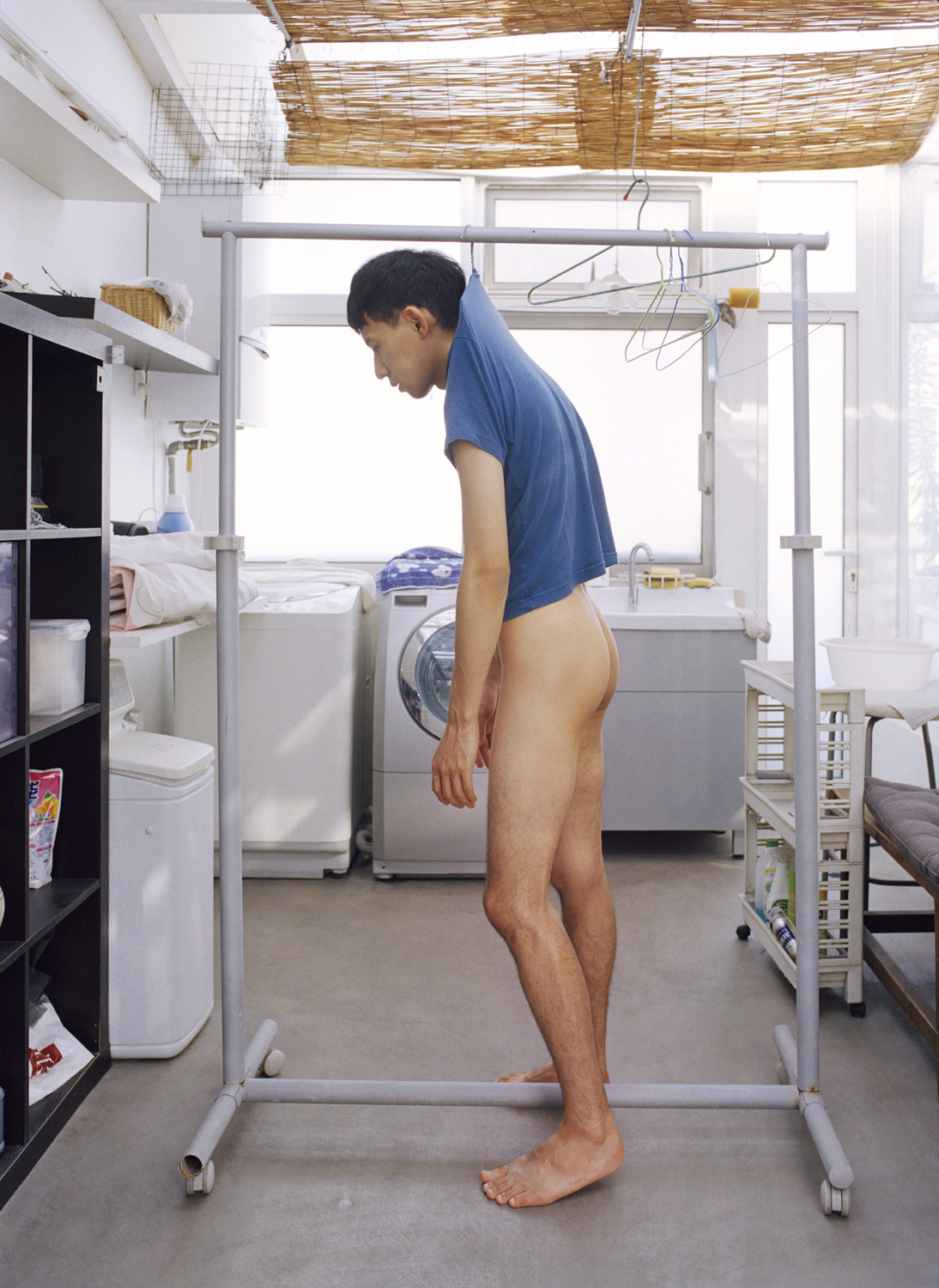 Image: Hang In There, 2015, Inkjet Print
Image: Hang In There, 2015, Inkjet Print
NW: I am sure people often interpret your my work as feminism. But theoretically, it will be problematic to call it as Chinese feminism. How do you feel like this Western ideology and discourse of sexuality have influenced your work?
PL: First of all, when I grew up I don’t think there is feminism in China. At least not that I’m aware of. People don’t talk about sexuality that much. I was so naïve in my college I wasn’t aware that my friends are gays. When I started to do my own work in the United States, it was much more about the freedom that I have by living here. I don’t have the pressure from family or peers or society, so I started to make things that I wanted to do. But I didn’t realize it was feminism in the beginning. People just look at my work and tell me, “This can be explained by some theories in feminism.”
NW: That’s how people see your work as feminist art.
PL: Yes, I started to understand the relationship between my ideas and feminism. However, at the same time I don’t want to say my work is feminism. For one reason is I am really pro-female, and I support feminism, but I don’t think it’s politically right to call my work feminism. It would do harm to feminism.
I still wish to influence girls, young girls because growing up as a girl in China I never felt that being female is something strong. I sort of rejecting my female identity when I was in China. I think if there’s more this kind of female voice in art and in Chinese society, it can change the future for young girls right now in China.
NW: I totally agree. There should be different voices. It’s about making choices. Girls should not be forced to do whatever they don’t want to do. They should be free to express themselves.
PL: I also think it’s not just for female, and it’s unfair for men to be viewed as somebody that you have to take all the responsibility. I don’t think that fits everybody, or it’s true that if you’re a man, you have to be strong, have to do sacrifices for the family, I think we’re not much different as men and woman. We’re equal.
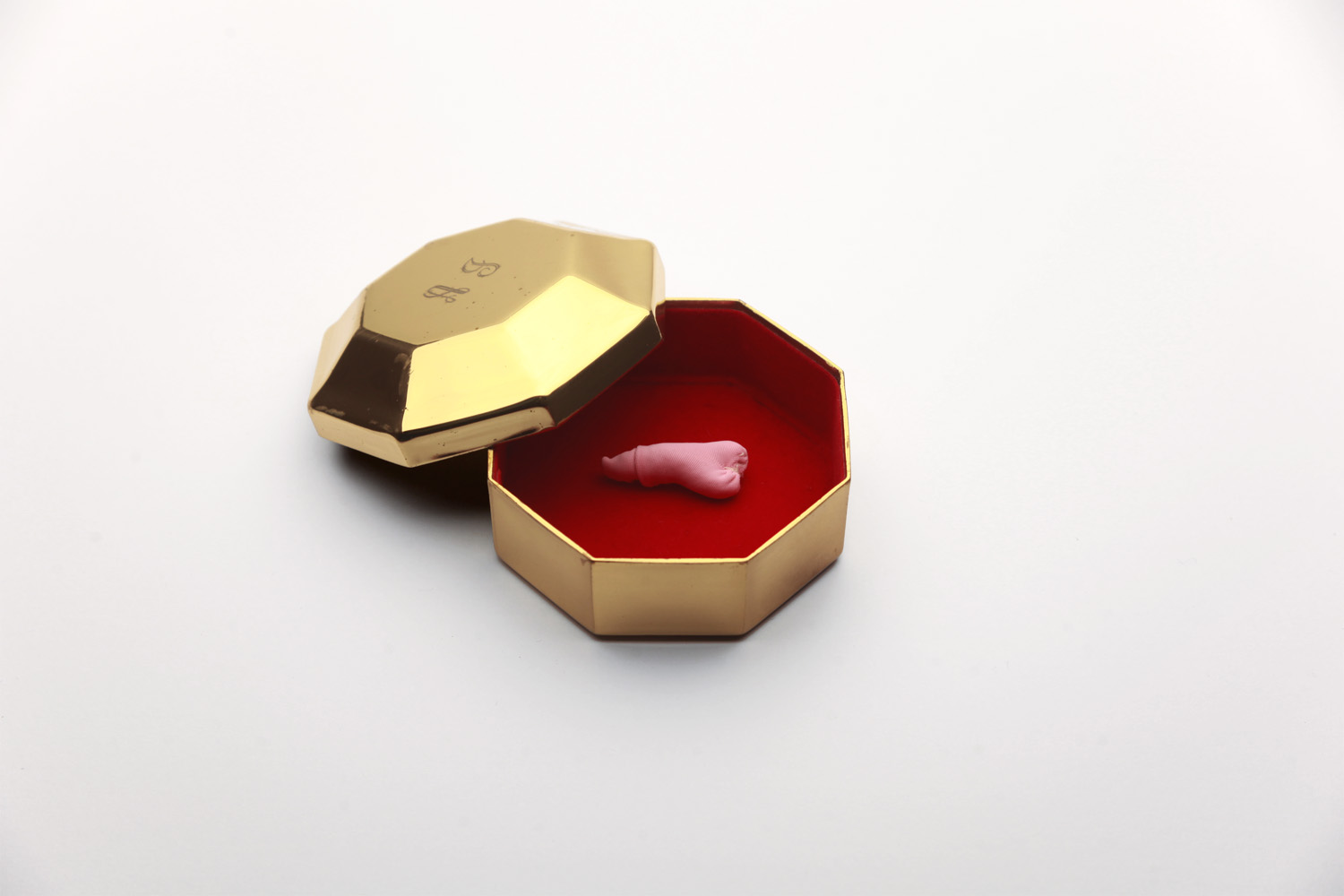
Image: A Collection of Penises, 2013, Material: stretchy fabric, pillow fillings, threads, vintage box
NW: It’s perfect timing that we talk about your Experimental Relationship series. May I ask how did you meet your boyfriend Moro?
PL: I met him in school, in Memphis. We went to the same school.
NW: He was younger than you, right?
PL: Yes, but in the beginning I wasn’t aware. I didn’t know he is Japanese. I didn’t know he is younger. I just assumed he’s somebody that about my age. I realized he looks very cool on the outside, but when I really got to know him he’s very different. He’s shy and often relies on me. It has changed my ideas about relationship. I call it experimental because in the beginning I didn’t believe this kind of relation could go on since he’s young and different. I thought I would treat this relation as an experiment and see how it last.
NW: Did you stage these photographs? Or was it more experimental?
PL: I have ideas about what I wanted to shoot. In the beginning, I told him my ideas and he would do it. Later on the more I did it he understood me more, and then he started treating it as our project together. Sometimes when I tell him what I want to do and during the photo shoot he will give me his input and his reaction in the photos. It has changed my photographs and oftentimes I would pick them as the final results. I setup experiment and he would give me a reaction inside photos.
NW: That’s very interesting as I’ve noticed in A Collection of Pennies (2013), you explored the possibilities of making artwork by not making it and question the owner of the authorship. Working closely with Moro, do you often think of him as a collaborator rather than a model or a prop?
PL: I think he is a collaborator. In the beginning I really think him as a prop in my photographs, and people started to think this is not right. You cannot treat somebody as a prop in your photographs.
I think it’s important for me to let him collaborate with me. Sometimes I will try to loosen some control because I have a lot of control in my photographs. I will give him some power like he usually is the one who takes the picture and clicks the shutter.
He can decide his own body movement. I think the limitation I have is being myself I can only do certain type of things. There are certain things I’m not good at. He has many skills that I don’t have. He’s more detail-orientated. I was thinking that making our work together two people can become one person.
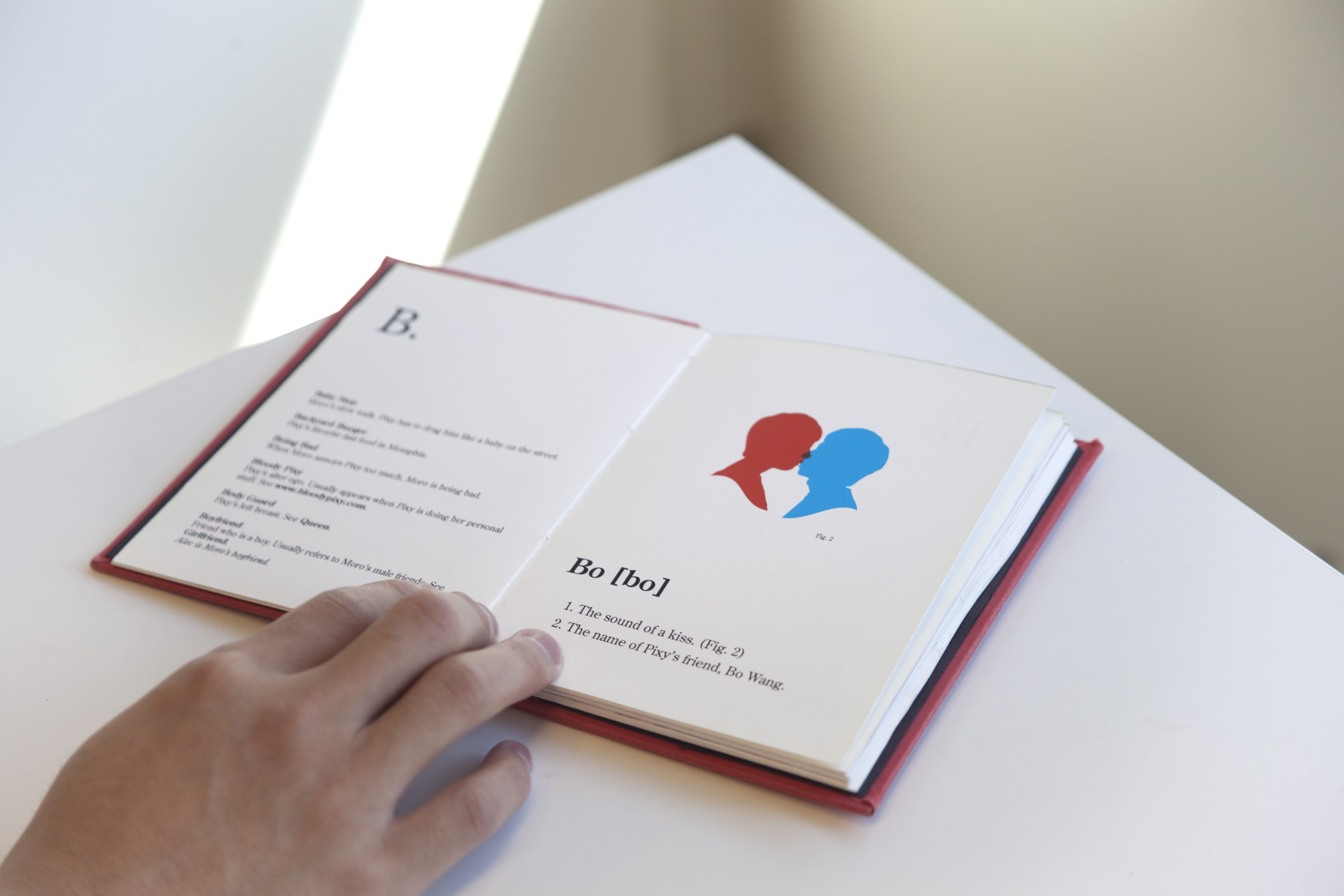
Image: Pimo Dictionary, 2010
NW: I really like the Family Sushi (2011) photograph, could you briefly explain how did you come up with the concept?
PL: There are many things that happened for me to take this photograph. One thing is I was participating in a game run by photographers. Each photographer made a photograph according to the last photograph that taken by the former photographer. It was like a chain game. I got a close up of two hands, and I remember one of the hand has green nail paint.
PL: I was thinking, “I really like this green color in the photograph, and I want to use something green.” I was just looking at my home and then I found this scarf that he usually wears. It’s like a seaweed scarf. Also, in Japan there’s something that fascinates me about eating sushi on the human body.
NW: You meant Nyotaimori?
PL: I don’t know what’s called, but people serve sushi from the naked body of a woman. I thought it would be fun if I treat him as a piece of meat over the sushi rice ball. He’s also Japanese so I made a joke about you’re my piece of meat at home.
Image: Holly’s Trip to the Earth from Stills from Unseen Films series, ongoing
NW: As a fashion scholar, I am particularly interested in some of your recent works, including Soft Heeled Shoes (2013), Breast Spray (2015), and Men as Bags (2016). Could you please tell me more about how you deal with body and desire in these projects?
PL: Soft Heeled Shoes is one of the first projects that I made in sculpture because I used to only feel comfortable with photography. At that time I had a residency in Lower Manhattan Cultural Council and I had access to NYU AMS Lab. They had 3D printers. They told me they could print something soft. I suddenly recalled one idea I had before about making a pair of high heeled shoes with soft penis and bouncing balls.
I started to figure out how to make the heels. I made a cast of the penis of my boyfriend, and then tried to match with the balls from sex toys because it was the perfect shape I wanted. I combined these elements and printed them from the 3D printer.
Image: Breast Spray, 2015, Silicone, Plastic, Metal, 6 x 6 x 10 inches
NW: I found it is fascinating that there is a more intimate relationship in the band PIMO. Do you think being a multi-instrumentalist, upright bassist and composer, Moro takes control or becomes the dominant one in this collaboration?
PL: Definitely. I think the reason why I made a band with him was because I thought, “I became too dominant, which I don’t think it’s very healthy since it cannot only go one way.” I was trying to collaborate with him so that he could take some control. I had a dream of making a band, but it would never happen if it’s not for him because he’s a musician. We collaborate on a different level as we will make lyrics together.
We sometimes think ourselves as a high school girl band. This kind of thinking frees up our imagination and let us enjoy making something completely different.
Image: PIMO (Pixy & Moro) is a Brooklyn-based artist duo by Pixy Liao & Moro Magario
NW: In my ongoing research, I am trying to unfold hybrid, cross-cultural identities of Asian American artists and designers. However, after decades of developments, many people still label this group as “Asian artists.” Would you like to share some of your experiences and thoughts about being a Chinese artist, who was born and raised in Shanghai but immigrated to America later in life?
PL: I’m not really sure. For art maybe I’m more US-influenced, but I consider myself as a Chinese artist because before I came to the United States I’ve almost finished my identity process. I feel Chinese American artist is for the second generation of Chinese immigrants. That’s fascinating. I assume some people in China don’t really consider you as a Chinese artist. Yes, in China they don’t see me as a Chinese artist. But when you say Chinese American artists I feel they are in a circle, a small circle. I don’t think I’m inside of that circle. I think what I am is not about what I think I am. It’s really about who are viewing me. Sometimes when people don’t understand you they try to distant you. For example, in China there are some people who see my work and then think it’s very different from what they see in other Chinese art. They would say, “This is totally American art.” However, in the United States when people don’t understand my work, they would say, “This is Asian art, so we don’t understand it.”
It doesn’t really matter for me to say who I want to be. As an international artist, how people want to describe me is not really up to me. If the curators think, “Oh. You’re Brooklyn artist.” You’re a Brooklyn artist. This is about Asian American, so you’re an Asian American artist. You change your identity so often, but I’m still myself.
NW: In the West people tend to criticize artists who often use other cultures in their artistic practices in relation to cultural appropriation. But I am more interested in discussing the other way around when Chinese artists re-appropriate Western cultures in their work. Would you like to share some of your thoughts?
PL: I totally use Japanese culture in my work, which is not my own identity, and I use American culture as well. It really depends on how you use it, and what’s the relationship between the other culture and your own experience. I don’t think it’s a taboo because otherwise we are going to be forever chained to our own cultural identities. In this world right now people are traveling so much that you’re living in different cultures. It’s impossible to say you’re 100% Chinese or American.
Image: Lady and Gentleman, solo show at Galleri Vasli Souza in Malmö, Sweden, 2017
NW: My last question is what is next for you? Are you working on any upcoming exhibitions in 2017?
PL: Yes. These days I’m thinking about making a new project about female leadership, but it’s still in a process. I might have a show in Sweden in March and maybe in Germany, but it’s not finalized yet.
NW: Brilliant! Thank you so much!
PL: Thank you.
